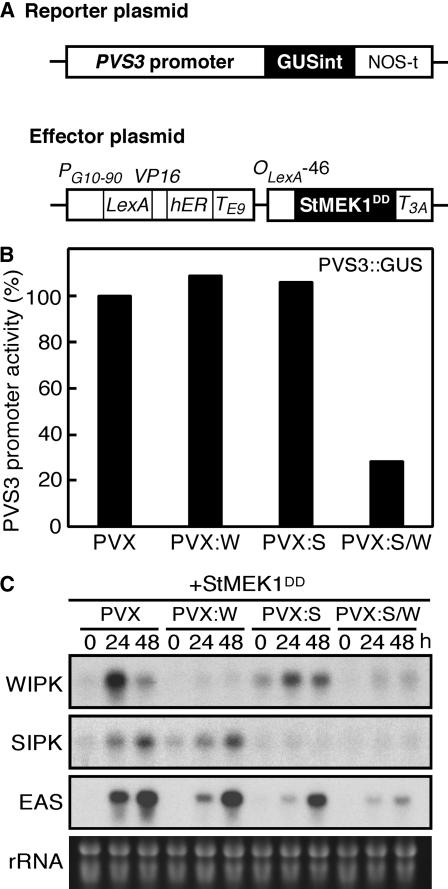Figure 4.
PVS3 promoter is controlled by both SIPK and WIPK. A, Scheme of reporter and effector plasmids used in transient assays. The reporter plasmid PVS3 promoter fragment (positions −2,334 to +30) was translationally fused to the GUS gene containing intron (GUSint). The effector plasmid estradiol-inducible promoter was fused to the StMEK1DD gene. B, Half leaf of gene-silenced N. benthamiana was coinfiltrated with a mixture of Agrobacterium harboring PVS3::GUSint (reporter) or pER8::StMEK1DD (effector). Estradiol (10 μm) was injected 48 h after agroinfiltration to activate the effector. GUS activities driven by PVS3 promoter in response to StMEK1DD were measured in gene-silenced N. benthamiana by PVX (PVX-control [PVX], WIPK [PVX:W], SIPK [PVX:S], SIPK/WIPK [PVX:S/W]) 24 h after estradiol injection. Results are presented as relative values calibrated by GUS activity, which were measured by fluorometric quantitation of 4-MU, under the control of 35S promoter in another half leaf. The PVX-control with StMEK1DD was arbitrarily assigned as 100% value against which all other values were plotted. C, Expression profiles of EAS in the gene-silenced N. benthamiana. Total RNA was isolated from gene-silenced N. benthamiana leaves after infiltration with Agrobacterium harboring 35S::StMEK1DD, and transcript levels of WIPK, SIPK, and EAS were determined by RNA gel-blot hybridization.

